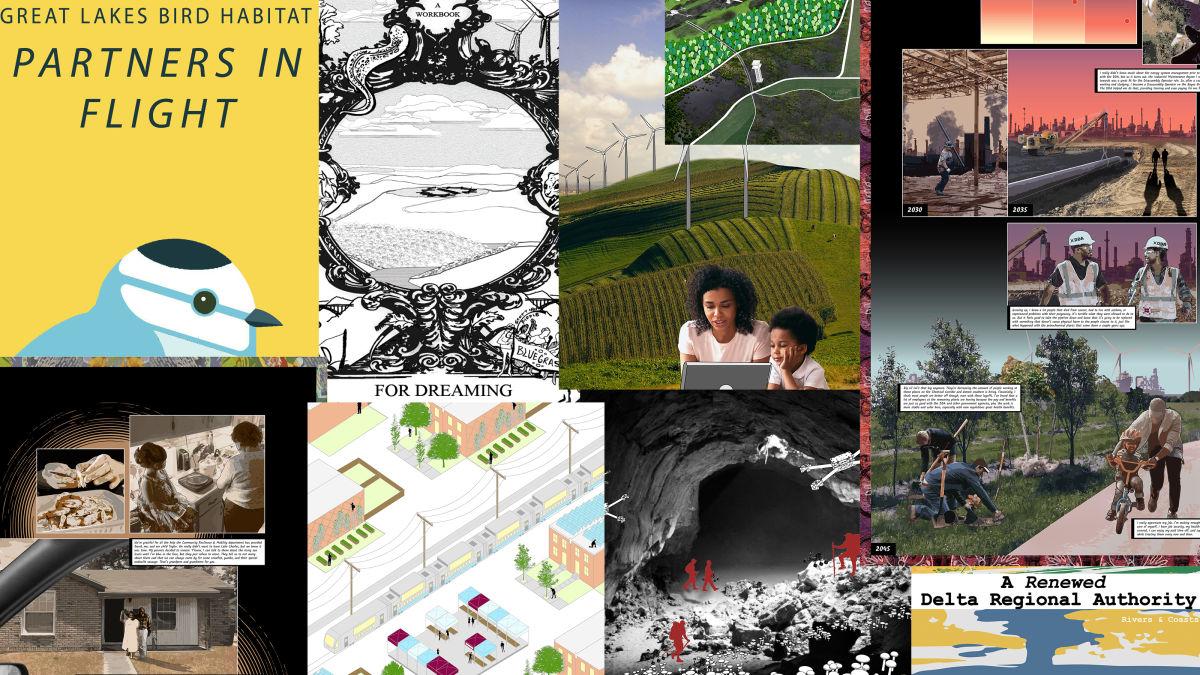The Green New Deal tells an important story about what society could be instead of what it currently is. It’s about transitioning to a system that allows everyone a fair shot at succeeding and fixing past wrongs from pollution to colonial land grabs.
While the resolution lays this out in clear language, the details are what need to be filled in. That’s started at the federal level through additional bills such as a Green New Deal for Public Housing. But the vision for a Green New Deal was always going to come from the ground up.
A new project by students at the University of Pennsylvania helps envision what those bottom-up ideas are and how they could be implemented, filling in some of the plot details for how society heals the planet and rights historical wrongs.
Penn has emerged as a place where the concepts and network for a Green New Deal are getting built out. Research from the school informed the Green New Deal for Public Housing, and events have brought together scholars and practitioners focused on just decarbonization. But as important as research in the service of policy is, imagination and an invitation to picture systems that better serve us rather than the broken ones we currently rely on are equally essential.
“Visioning the Green New Deal is necessary because if we want a future of jobs, justice, and decarbonization to win, it has to be a place people see themselves in and want to fight for, to organize for, and make real,” A.L. McCullough, a graduate student in landscape architecture at Penn who worked on the project, said in an email.
The new student effort is called Designing a Green New Deal, and it includes atlases of Appalachia, the Midwest, and the Gulf Coast, three regions of the U.S. hit hard by economic inequality, resource extraction, and the climate crisis, as well as visions of alternative futures of what could be under a Green New Deal. The resulting website is far more than a repository of term papers; instead, it creates an immersive world we could have based on interviews with activists, experts, and everyday people.
The Midwest, for example, features a recipe collection, wind- and people-powered radio station, and a strikingly illustrated children’s book that together help viewers piece together the decades of work it took to build a Green New Deal. The stories these pieces tell bring to life the decades of work it takes to create a new world (I seriously cannot encourage you enough to dive into the website). Claudia Aliff, a grad student of city planning who worked on the Midwest group, said the children’s book in particular “taught me about storytelling and the power of everyday objects in changing people’s outlook on something that might be difficult to wrap one’s head around. The books I read as a child were so formative and made difficult topics understandable.”
The future sections also borrow ideas and styles from the original New Deal. Among them are a jobs guarantee and climate and restoration work modeled on the Civilian Conservation Corps and new federal agencies that mirror those of the New Deal such as the Works Progress Administration and Tennessee Valley Authority. Posters and imagery of workers and landscapes abound.
But the visions for the Midwest, Appalachia, and the Delta regions also build on the failures of the New Deal, particularly its exclusion of basically anyone who wasn’t a white guy. Christine Chung, a grad student in landscape architecture, said the Gulf Coast group spent time talking with members of local tribes and environmental justice groups. That type of what Chung called “inclusive futuring,” which lays out multiple possible futures that many have a voice in creating, will be a huge determinant of the success of a Green New Deal and not just recreating the same crappy system. The project also tackled ending the carceral system. Chung described it as a part of the Green New Deal as a form of “restorative justice that cultivates a culture of care in place of a punitive and profiting criminal justice system.”
As much as the Green New Deal resolution introduced by Rep. Alexandria Ocasio-Cortez and Sen. Bernie Sanders may be a rallying point, it’s the countless spokes radiating across the country in the form of activists, academics, and anyone willing to imagine something better that will end up defining what the Green New Deal actually is. The clearer that vision becomes, the harder it will be to falsely dismiss it as socialists coming to steal your hamburgers (as Republicans have). That’s not to say there won’t be pushback or that once the vision is clearer, we have a straightforward path to make it reality. But without it, we’ll end up fumbling around in the dark.
This article is auto-generated by Algorithm Source: earther.gizmodo.com


